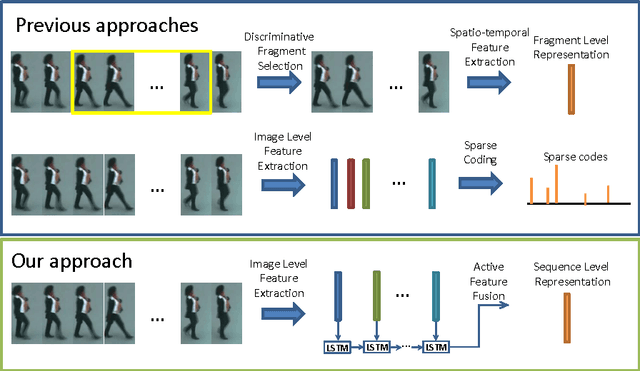Person Re-Identification via Recurrent Feature Aggregation
Paper and Code
Jan 23, 2017



We address the person re-identification problem by effectively exploiting a globally discriminative feature representation from a sequence of tracked human regions/patches. This is in contrast to previous person re-id works, which rely on either single frame based person to person patch matching, or graph based sequence to sequence matching. We show that a progressive/sequential fusion framework based on long short term memory (LSTM) network aggregates the frame-wise human region representation at each time stamp and yields a sequence level human feature representation. Since LSTM nodes can remember and propagate previously accumulated good features and forget newly input inferior ones, even with simple hand-crafted features, the proposed recurrent feature aggregation network (RFA-Net) is effective in generating highly discriminative sequence level human representations. Extensive experimental results on two person re-identification benchmarks demonstrate that the proposed method performs favorably against state-of-the-art person re-identification methods.
 Add to Chrome
Add to Chrome Add to Firefox
Add to Firefox Add to Edge
Add to Edge